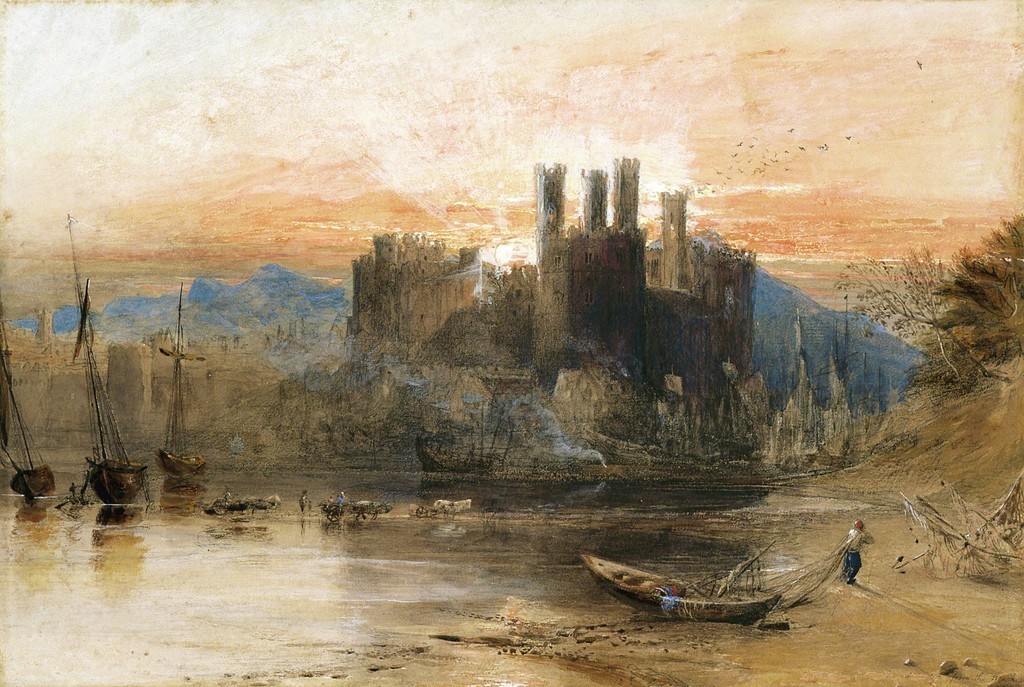
Who is Joseph Mallord William Turner? What are they interests and works, Childhood, Family, Education
Joseph Mallord William Turner was an English Romantic landscape painter. He was best-known for the study of light, color and atmosphere in his paintings. Some of his famous paintings include ‘Fishermen at Sea’, ‘Rain’ and ‘Steam and Speed’.
He is still recognized as an influential painter of the 19th century and a beacon of the Impressionist movement. Joseph Mallard William Turner was born on April 23, 1775, in London, England, to William Turner Mary Marshall. His father was a barber.
When he was around twelve he sold his first painting to one of his father’s customers. His father was amazed by his son’s creativity. So, he decided to send him to art school. At the age of fourteen, Turner attended the Royal’ Academy.
He decided other artists’ works which influenced his art later on. In 1793, the Royal Academy awarded him for his work. From 1792 onwards, he spent his summers touring the country in search of subjects, filling his sketchbooks with drawings to be worked up later into finished watercolors.
As an Artist he makes some Great Paints, Water Colour Paintings, Artworks
He learned to paint antique structures and also drew the human body. He became skilled at using watercolors. Many of his artworks were published in magazine.
Around 1796, he began to display his oil and watercolor paintings at the Royal Academy. Turner created his first oil painting in 1796. It was called ‘Fishermen at Sea’. The art was famous for its moonlit view.
It received positive reviews from art critics. His artwork was compared with that of other famous painters. Turner traveled in search of inspiration. He visited Wales, Yorkshire and the Lake District, the Midlands, Scotland, and the European continent in between 1792 to 1801.
Royal Academy
In 1799, at the youngest permitted age (which was 24), Turner was elected an associate of the Royal Academy, and in 1802 he became a full academician. In 1807, Turner became a professor of perspective at the Royal Academy, where he lectured till 1828.
He used to make copies of the rough drawings of John Robert Cozens, a landscape painter. This influenced Turner to try out landscape painting. He eventually became the greatest landscapist of the 19th century.
Tuner’s middle years brought a change in his style. His work became bright and atmospheric. The major focus in his art during this time was on the effects of light. His paintings such as ‘St. Mawes at the Pilchard Season’ and ‘Frosty Morning’ all focused on atmospheric quality.
Went to Rome and Many Places
He also continued to travel around the globe. He spent a few months in Rome, Florence and Venice. He created thousands of drawings, which he eventually turned into paintings. His used purer and brighter colors. Other works of Turner such as ‘The Bay of Baiae with Apollow and Sibyl’ were part of Turner’s progress as an artist. He turned oil paints as watercolors and made the colors almost transparent.
The last few years of his life were spent abroad. He visited Italy, Switzerland, Germany and France. He created artworks based on architecture such as ‘The Fighting Temeraire’ in 1838. It was a tribute to the passing age of ships, which were replaced by steam-powered vessels.
Some Great Collections by Turner
He also discovered a new, more fluid style that suggested movement and space. During this time, his art was influenced by Impressionism. He paid less attention to details and more to natural Phenomenon like the sea, the storm, the fire and the sun.
His masterpieces followed the themes of rain, steam and speed; he emphasized hue and light. Most of Turner’s works were related to the Impressionist style of painting. Tuner’s artwork later influenced brilliant artists like Monet, Degas and Renoir.
Achievements and Good bye to the world
As years passed, Turner’s paintings showed the dissolution of forms. The objects in the paintings of forms. The objects in the paintings became less recognizable. One of the examples of this type of painting was ‘The Sunrise with Sea Monsters’.
The sea monsters therein could barely be made out. Turner remained unmarried all his life; however he was allegedly the father of two daughters. He died on December 19, 1851, in London, England at the age of 76.
